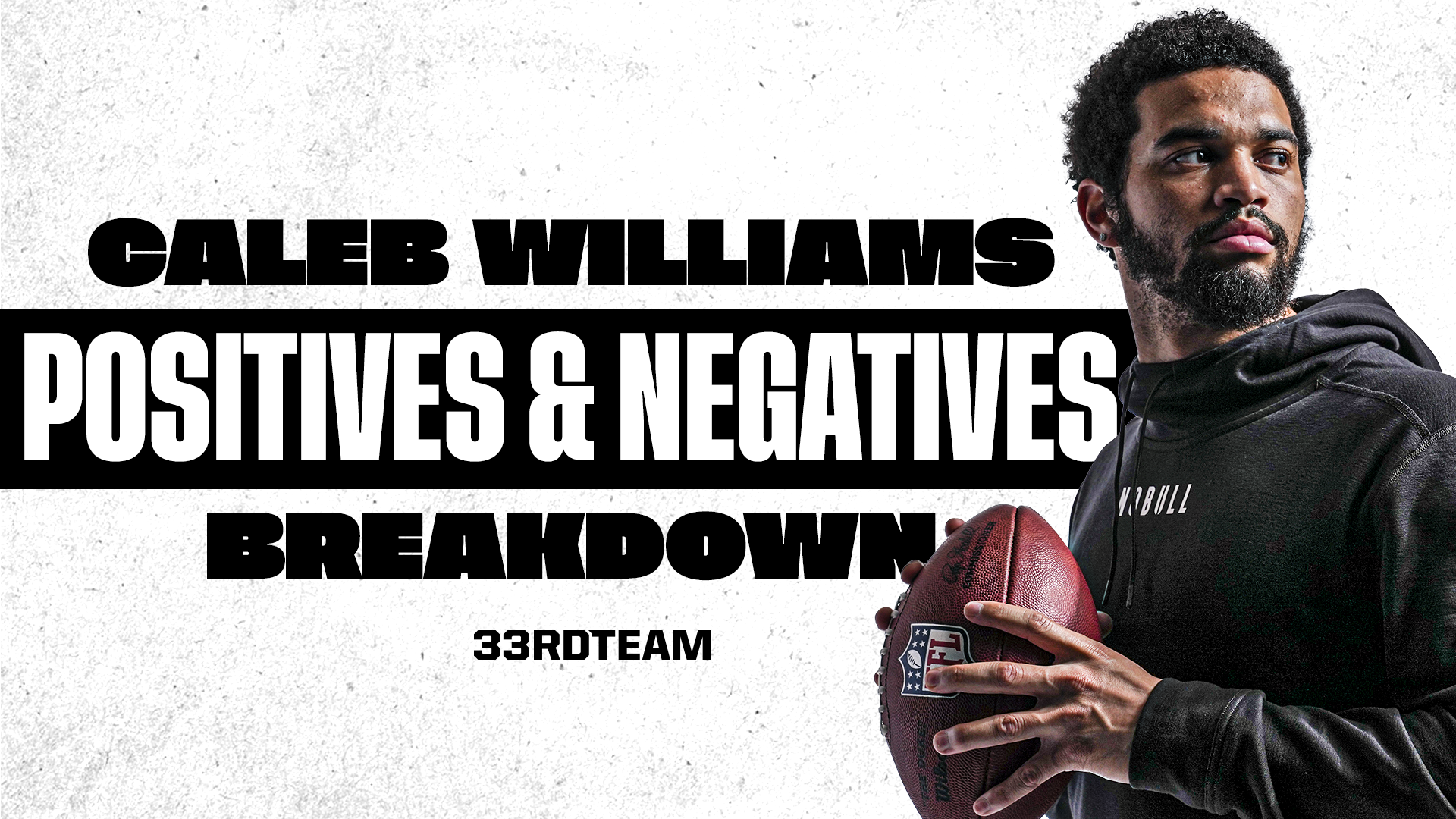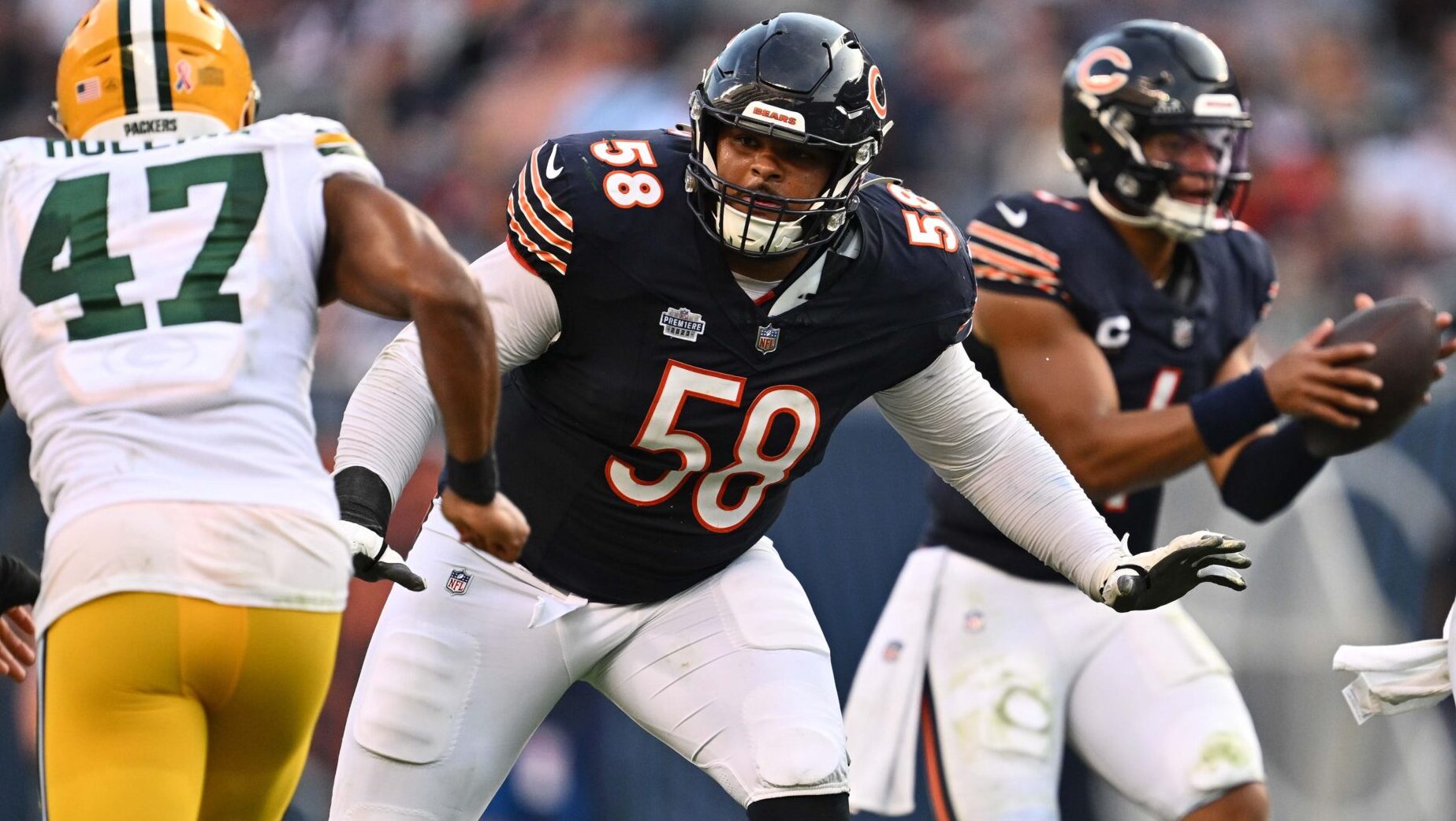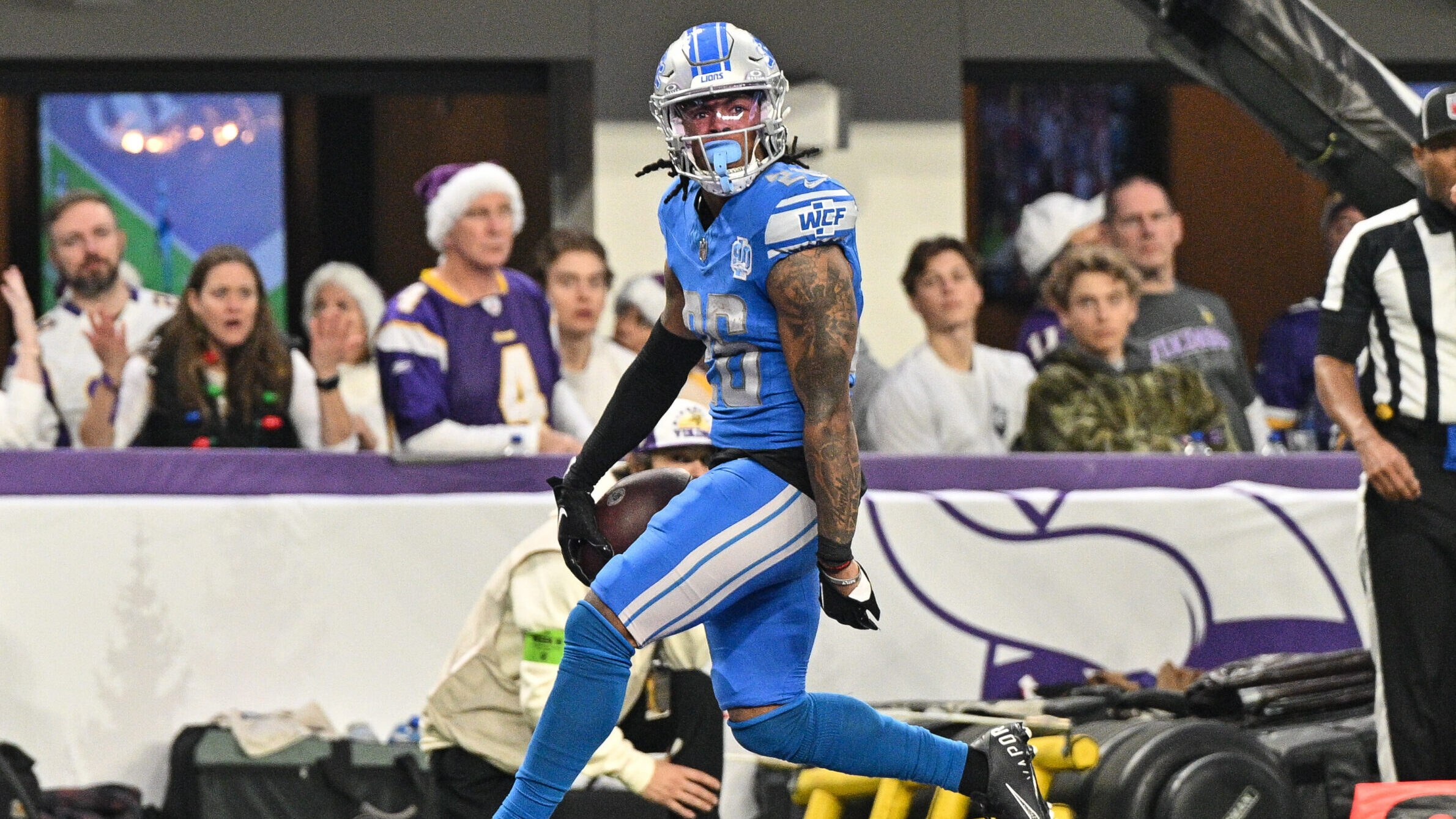Analysis
10/13/20
3 min min read
Top 10 NFL Punters Ranked By EPA
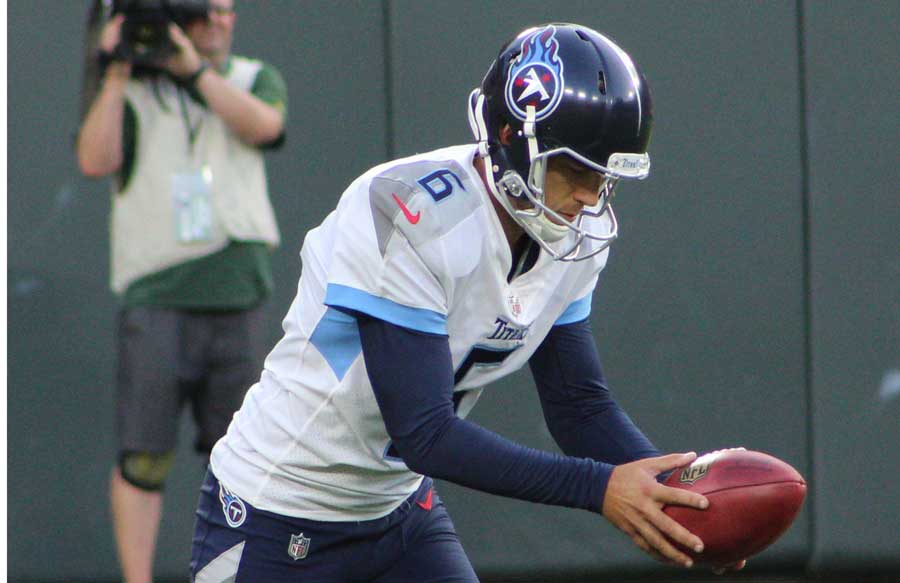

Punters don't get much love. They're usually only on the field when the offense has stalled, so it's easy to understand why NFL fans have a negative reaction when their team's punter is in the lineup. With analytics-focused teams going for it on fourth down at an increasing rate, punters have become even more devalued. Still, a good punt can increase a team’s chance of scoring.
The idea that punting can increase scoring chances may seem counterintuitive. After all, outside of a turnover, a team cannot score if they don't have the ball. While it is true that a punt marks the end of an unsuccessful drive, it can increase a team's chances of being the next team to score, regardless of drive.
Think of it this way: If a team downs a punt at the 5-yard line, is it more likely that a) its opponent drives the ball all the way down the field and scores; or b) that they stall out and give the ball back to the punting team in a more favorable field position?
In the previous scenario of a team starting on the 5-yard line, that team had negative expected points, as the other team was more likely to score next, based on their field position. This phenomenon of creating negative expected points situations is where punters derive their value.
Valuing Punters
What makes a good punter? Some may say leg strength, as there is something magical about the long ball. Others want more accuracy -- being able to pin the opponent inside the 20 is one of the most desirable outcomes. Both leg strength and accuracy can help the team in different situations, and the combination of these two traits can be reflected in the Expected Points Added per punt.
Expected Points Added (EPA) is a football statistic that seeks to measure the value of individual plays in terms of points. This is done by calculating the Expected Points (EP) of the down, distance and field position situation at the start of a play and contrasting it with the situation at the end of the play.
To evaluate the top punters, data was used from the 2017-2019 seasons. For each punter, their EPA was added up for each attempted punt and divided by the total number of punts over those three seasons. Punters were only considered for this ranking if they attempted a minimum of 50 punts over the period, leaving 45 eligible punters. Interestingly, of the 45 punters, only 14 had a positive EPA per punt, reflecting the inefficiencies of NFL fourth-down decision making.
The top 10 punters by EPA per punt are displayed in the table below, along with how they stack up in average yards per punt and percentage of their punts downed inside the 20-yard line.
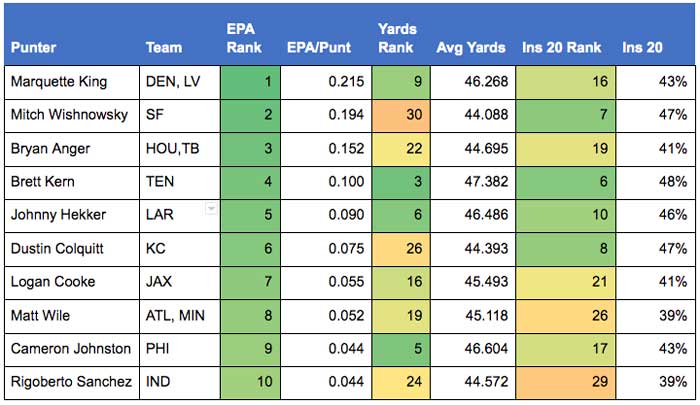
Observations
The top punter by EPA per punt from the 2017-19 seasons was Marquette King, who was a punter for six years with the Raiders, leading the NFL in punt yardage in 2014, before being signed by the Broncos in 2018. After being placed on IR with an abductor injury, King was released from Denver and punted for the XFL’s St. Louis Battlehawks in 2019. He is currently a free agent.
While King ranks in the top half of punters in yards and percentage inside the 20, much of his EPA likely comes from his teams punting from low expected points situations. Both the Raiders in 2017 and Broncos in 2018 finished with a 6-10 record and had offenses that ranked 23rd and 24th in the league, respectively.
Mitch Wishnowsky ranks second on this list. However, he just made the cutoff for total punts, with 57 over the past three seasons (2019 was his first season in the league). While his punts did not travel particularly far on average, he was adept at pinning his opponents deep, likely because of the good field position afforded him by the Super Bowl runner-up 49ers.
Brett Kern ranked highest in this top 10 list in both average punt length and inside the 20 percentage. Kern was an All-Pro every year from 2017-19 and was selected as first-team All-Pro in 2019. Johnny Hekker, placing just below Kern, is a four-time first-team All-Pro, including a selection in the 2017 season.
Conclusion
While leg strength and accuracy may be the main components of scouting punters for the NFL, their EPA per punt may be a better overall measurement for success in the league. While EPA can be highly affected by the field position provided prior to the punt, it is the best measurement for how much value is added to the team. NFL teams are still far from efficient with their fourth-down decision-making, but despite this overly conservative tendency, punting can still add value to a team.




